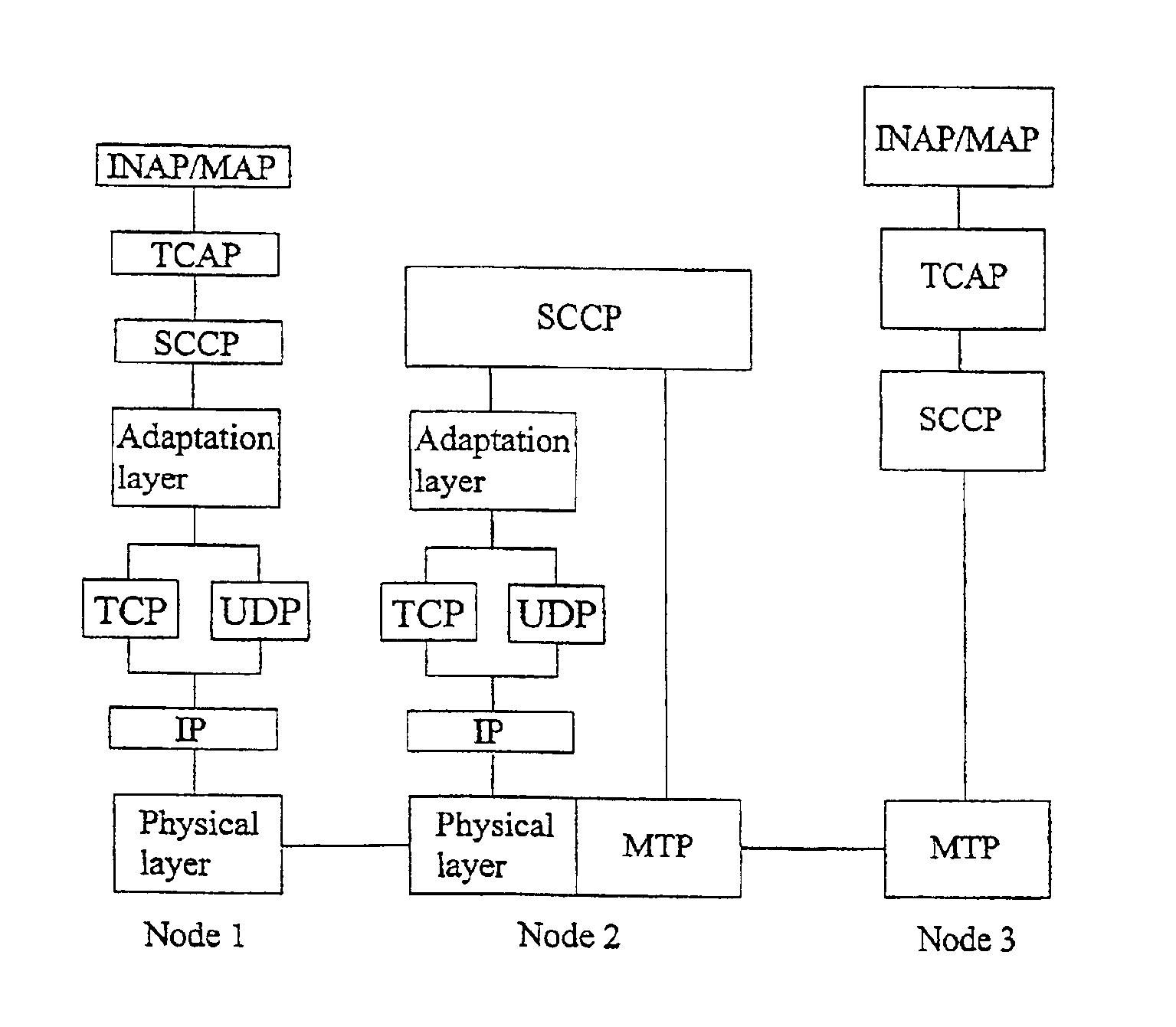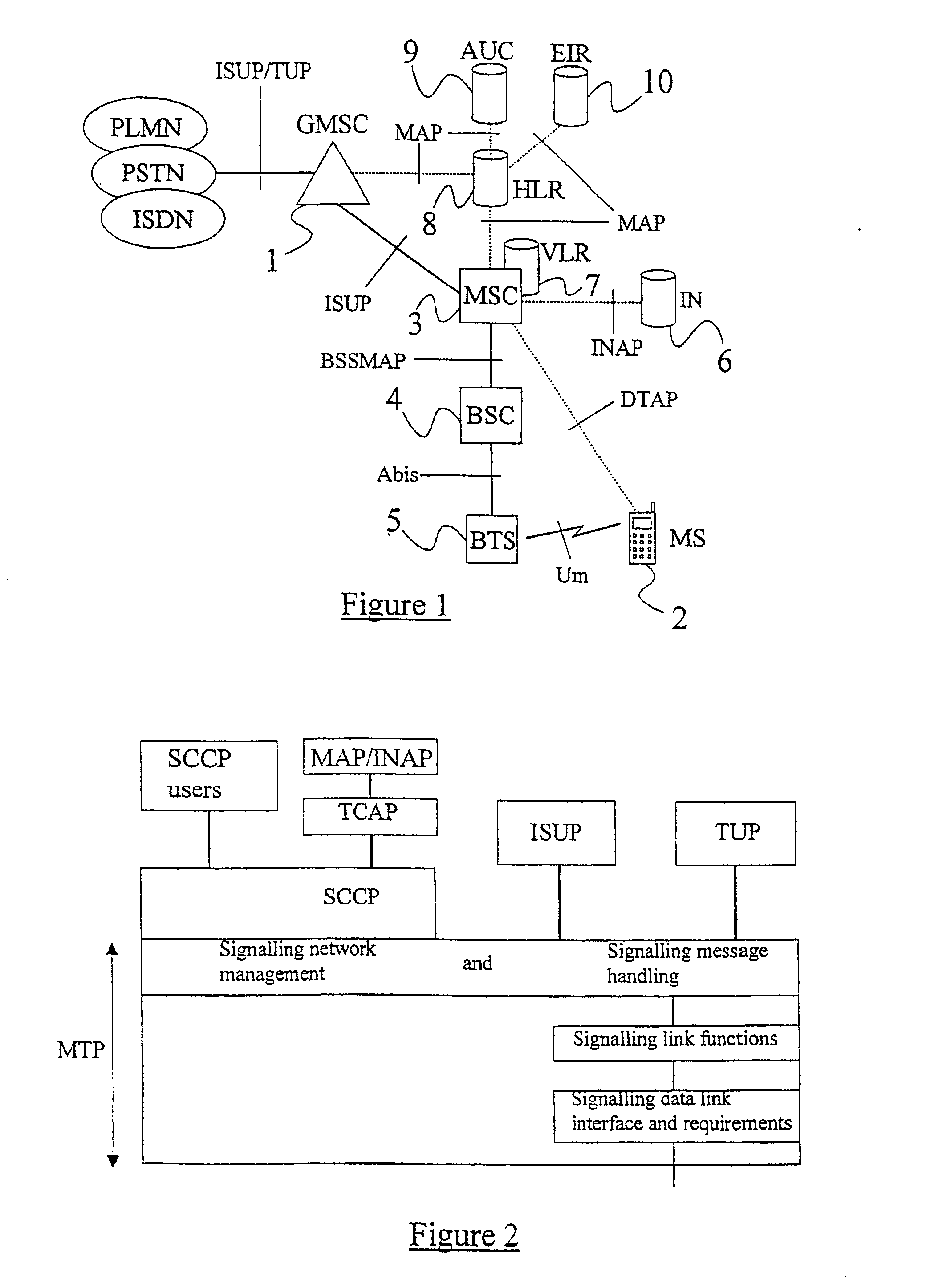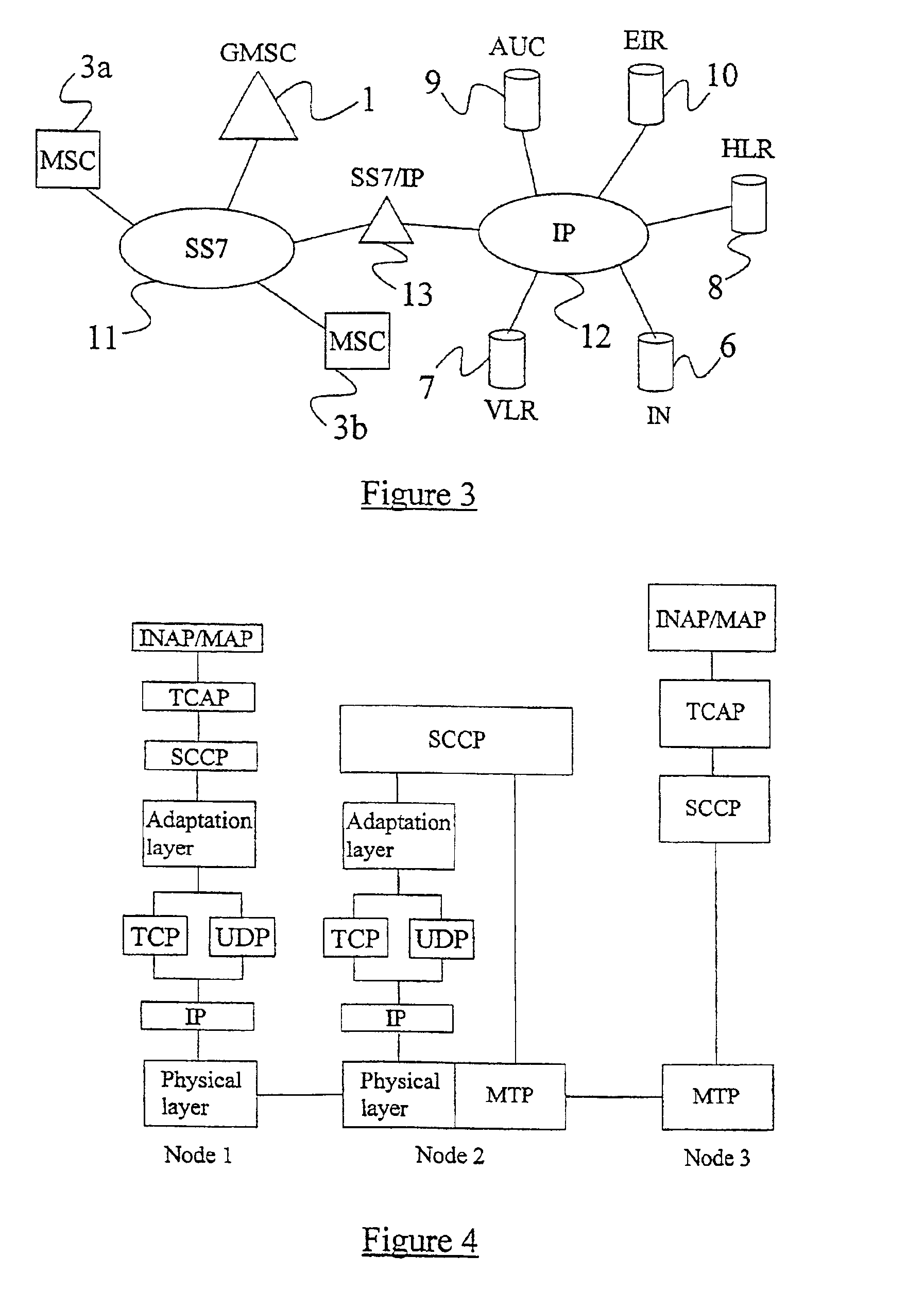Signalling in a telecommunications system
a technology of telecommunications system and sign language, applied in the field of sign language in a telecommunications system, can solve the problems of significant barrier, high installation and maintenance cost, and add significantly to the maintenance overhead of the network
- Summary
- Abstract
- Description
- Claims
- Application Information
AI Technical Summary
Benefits of technology
Problems solved by technology
Method used
Image
Examples
Embodiment Construction
[0045]The general structure in terms of signalling nodes and signalling interfaces of a GSM PLMN has already been described above with reference to FIGS. 1 and 2. FIG. 3 shows various nodes of the GSM PLMN where it is assumed, for the purpose of this discussion, that each of these nodes comprises an application part (e.g. MAP, INAP) having a conventional composition such that it can be supported by SS7 for the sending of signalling information to a peer application part at some other node. Considering in particular the MSCs 3a,3b and the GMSC 1, these nodes are connected to a conventional SS7 network 11 for the purpose of communicating signalling information.
[0046]Intelligent network and mobile network specific nodes, including the IN node 6, VLR 7, HLR 8, AUC 9, and EIR 10, each have application parts (and in particular MAP and INAP) similarly constructed for peer-to-peer communication via SS7. However, these nodes each comprise an additional interface which enables them to communi...
PUM
 Login to View More
Login to View More Abstract
Description
Claims
Application Information
 Login to View More
Login to View More - R&D
- Intellectual Property
- Life Sciences
- Materials
- Tech Scout
- Unparalleled Data Quality
- Higher Quality Content
- 60% Fewer Hallucinations
Browse by: Latest US Patents, China's latest patents, Technical Efficacy Thesaurus, Application Domain, Technology Topic, Popular Technical Reports.
© 2025 PatSnap. All rights reserved.Legal|Privacy policy|Modern Slavery Act Transparency Statement|Sitemap|About US| Contact US: help@patsnap.com



